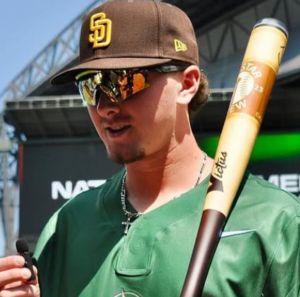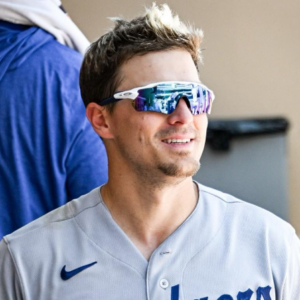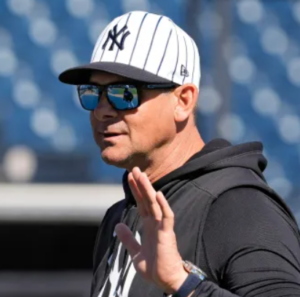Zack Cozart Advocates for Trevor Bauer’s Return to the Cincinnati Reds
Former All-Star infielder Zack Cozart has recently voiced his opinion that the Cincinnati Reds should consider bringing Trevor Bauer back into their roster. This suggestion comes in the wake of an unfortunate injury to the Reds’ leading starting pitcher, Hunter Greene, who was placed on the 15-day injured list due to soreness in his right elbow.1
With the Reds’ postseason hopes hanging by a thread, Cozart believes that adding Bauer to the rotation could significantly enhance the team’s chances, especially once Greene returns.
Table of Contents
Hunter Greene’s Breakout Season Cut Short
Hunter Greene, the 24-year-old flamethrower, was in the midst of a breakout season when the injury struck. Greene’s 2024 campaign has been nothing short of spectacular. He has posted a 9-4 record, accompanied by a stellar 2.83 ERA and an impressive 1.019 WHIP.
His strikeout rate has been a highlight, with 163 batters fanned over 143.1 innings, marking a career-best performance. Greene’s dominance on the mound had positioned him as one of the key factors in the Reds’ competitive edge this season, making his absence a significant blow to the team.
The Case for Trevor Bauer
Trevor Bauer, a former Cy Young Award winner in 2020, is a name that evokes both talent and controversy. Bauer has a proven track record, particularly during his time with the Reds, where he was instrumental in their success.
Cozart’s argument is that Bauer’s experience and skill could serve as a much-needed stopgap during Greene’s absence and, upon Greene’s return, form a formidable one-two punch in the rotation.
The Reds’ Current Dilemma
The Cincinnati Reds are in a precarious position. The team has shown flashes of brilliance throughout the 2024 season, but consistency has been a challenge.
With Greene out, the Reds’ rotation is significantly weakened, making the need for a reliable arm more pressing. Bauer’s return could inject the rotation with the stability and experience it currently lacks, providing the team with the depth needed to push through the final stretch of the season.
Also Read: Gunnar Henderson (Baseball): Highlights Key Factor for Orioles to Secure AL East Title
Hunter Greene’s IL Stint: A Setback to Cy Young Award Aspirations
Hunter Greene’s recent placement on the 15-day injured list (IL) due to soreness in his right elbow has cast a shadow over what has been an otherwise remarkable season for the young Cincinnati Reds pitcher.2
View this post on Instagram
This injury is not just a blow to the Reds’ postseason hopes but also a significant setback to Greene’s personal aspirations, particularly his bid for the prestigious Cy Young Award.
A Stellar Season Cut Short
- Before the injury, Greene was enjoying the best season of his career. His 2024 performance has been nothing short of exceptional, marked by a 9-4 record, a 2.83 ERA, and an impressive 1.019 WHIP.
- His ability to dominate on the mound was evident in his strikeout numbers, with 163 batters struck out over 143.1 innings, setting new personal bests and establishing him as one of the premier pitchers in Major League Baseball (MLB) this season.
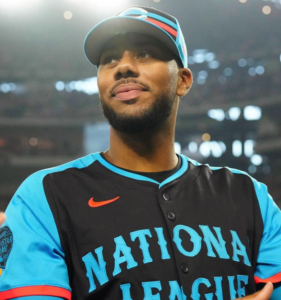
- Greene’s outstanding play earned him his first All-Star selection earlier in the year, and he was widely regarded as a frontrunner in the National League (NL) Cy Young Award race.
- His dominance on the mound, consistency throughout the season, and role as a cornerstone in the Reds’ rotation positioned him as a serious contender for one of baseball’s most coveted individual honors.
The Impact of the Injury on Cy Young Prospects
However, Greene’s recent injury could have a significant impact on his chances of winning the Cy Young Award. While a 15-day IL stint may seem short, it can disrupt the momentum that Greene had built over the season.
The award, which honors the best pitcher in each league, is highly competitive, and even a brief absence can affect a player’s standing in the eyes of voters.
The Significance of bWAR in the Cy Young Race
One of the strongest arguments in Greene’s favor for the Cy Young Award has been his Wins Above Replacement (bWAR), a comprehensive metric that evaluates a player’s overall contribution to his team.
Greene has accumulated an impressive 5.3 bWAR for the season, placing him among the top 10 MLB players in 2024. Notably, Greene leads all National League pitchers in bWAR, further underscoring his value.
Hunter Greene’s Family Background: A Foundation of Support and Achievement
Hunter Greene, born on August 6, 1999, in Los Angeles, California, is not only a rising star in Major League Baseball but also a product of a supportive and accomplished family. The foundation of his success both on and off the field can be traced back to his parents, Russell and Senta Greene, who have played a significant role in shaping his career and character.
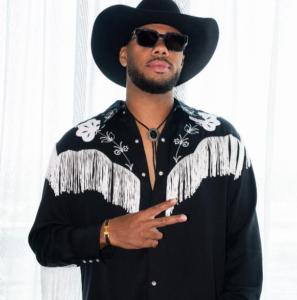
A Strong Family Foundation
Hunter’s parents, Russell and Senta Greene, have provided him with a nurturing environment that emphasized the importance of hard work, education, and perseverance. Their influence is evident in Hunter’s approach to his career and his ability to navigate the pressures of professional sports with poise and determination.
Reds Place Hunter Greene On 15-Day Injured List https://t.co/SHe6l0KXV8 pic.twitter.com/b4XkVLbXHB
— MLB Trade Rumors (@mlbtraderumors) August 17, 2024
Russell Greene: A Career in Investigation
- Hunter’s father, Russell Greene, is a former private investigator who worked closely with renowned American attorney Johnnie Cochran.
- Cochran is best known for his role in the defense team during the O.J. Simpson trial, which was one of the most high-profile legal cases in American history.

- Russell’s career in investigation and his connection to such a prominent figure in the legal world reflect a background steeped in discipline, critical thinking, and attention to detail—qualities that he has undoubtedly passed on to his son.
- Russell’s experience as a private investigator likely contributed to the structured and focused environment in which Hunter was raised.
- His professional background provided him with a unique perspective on problem-solving and analysis, skills that are valuable not just in his career but also in guiding his children through the challenges they face.
Senta Greene: A Pillar of Support
While much of the spotlight has been on Hunter’s father due to his high-profile work, Senta Greene has been equally important in Hunter’s development.
Senta has been a consistent source of emotional support and encouragement, ensuring that Hunter remained grounded despite the pressures that come with being a top athlete. Her role in the family highlights the importance of a balanced approach to nurturing talent, combining both discipline and compassion.
Also Read: Jose Siri (Baseball): Who Is He? Bio, Wiki, Age, Career, Perosnal Life, Instagram and More
Hunter Greene’s Professional Career: From Top Prospect to MLB Star
Hunter Greene’s journey from a highly touted high school phenom to a Major League Baseball (MLB) star has been marked by both extraordinary talent and the challenges that come with high expectations.
His professional career, which began with being drafted second overall by the Cincinnati Reds in the 2017 MLB Draft, has seen him rise through the ranks as one of baseball’s most promising young pitchers.
Draft Day: The Second Overall Pick
Hunter Greene entered the 2017 MLB Draft as one of the most talked-about prospects in recent memory. The right-handed pitcher from Notre Dame High School in Sherman Oaks, California, had wowed scouts with his electric fastball, which regularly touched 100 miles per hour, and his exceptional athleticism.
Many experts projected Greene to be the first overall pick, but in a surprising move, the Minnesota Twins selected shortstop Royce Lewis instead.
Minor League Journey: Development and Challenges
After being drafted, Hunter Greene began his professional career in the Reds’ minor league system. He made his debut with the Billings Mustangs, the Reds’ Rookie-level affiliate, where he quickly showcased his immense potential.
However, like many young pitchers, Greene faced the inevitable challenges of adjusting to professional baseball. Despite his raw talent, he needed to refine his mechanics, develop secondary pitches, and gain experience against more advanced competition.
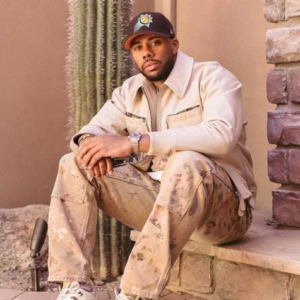
Overcoming Adversity: The Road to Recovery
The Tommy John surgery and subsequent rehabilitation period were pivotal moments in Hunter Greene’s career. The injury sidelined him for the entire 2019 season, and when the COVID-19 pandemic led to the cancellation of the 2020 minor league season, it extended Greene’s time away from competitive baseball.
This period tested Greene’s resilience and determination as he worked tirelessly to recover and return to the mound.
Personal Life: Hunter Greene’s Family and Resilience
Hunter Greene’s personal life is a story of family, resilience, and inspiration. Born on August 6, 1999, in Los Angeles, California, Greene grew up in Stevenson Ranch, California, with his parents, Russell and Senta Greene, and his two younger siblings, a sister named Libriti and a brother named Ethan.
Family Background and Support
Hunter Greene comes from a close-knit family that has been a source of unwavering support throughout his life and career. His father, Russell, worked as a private investigator and had an influential career, including working for the renowned American attorney Johnnie Cochran.
Russell’s work ethic and discipline had a significant impact on Hunter, shaping his approach to both baseball and life. His mother, Senta, has also played a crucial role in providing the emotional and moral support that has helped Greene navigate the highs and lows of his career.
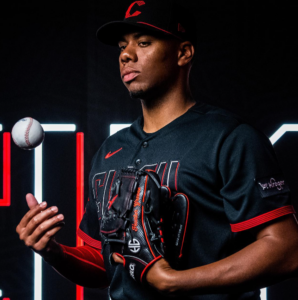
Sibling Bond: Libriti’s Battle with Leukemia
One of the most profound experiences in Hunter Greene’s life has been his sister Libriti’s battle with leukemia. When Libriti was just five years old, she was diagnosed with the disease, a diagnosis that sent shockwaves through the Greene family.
The news was devastating, but the family rallied together to support Libriti through her treatment and recovery.
Life in Stevenson Ranch
Hunter Greene and his family continue to reside in Stevenson Ranch, California, a community that has been home to the Greene family for many years. Despite his growing fame and the demands of his professional baseball career, Greene remains deeply connected to his roots and values the time he spends with his family.

FAQ’S
1. Who is the ex-Reds shortstop advocating for the move?
Ans: The ex-Reds shortstop mentioned in this context is likely someone with a notable history with the Cincinnati Reds, such as Barry Larkin. He may have publicly suggested the team should strengthen their pitching rotation by acquiring a proven Cy Young-winning pitcher.
2. Why is Hunter Greene’s injury a concern for the Reds?
Ans: Hunter Greene, one of the Reds’ promising young pitchers, has faced an injury setback that could impact the team’s rotation. His absence is a significant concern due to his talent and role as a key starter, making it crucial for the Reds to consider bolstering their pitching staff.
3. Which Cy Young winner is being suggested for the Reds to pursue?
Ans: The specific Cy Young winner being suggested could vary, but it likely refers to a top-tier pitcher with a proven track record. Names like Max Scherzer, Jacob deGrom, or other experienced pitchers who have won the Cy Young award in the past might be considered viable options for the Reds.
4. How would acquiring a Cy Young winner benefit the Reds?
Ans: Acquiring a Cy Young-winning pitcher would provide the Reds with an elite arm in their rotation, helping to stabilize the team during Hunter Greene’s absence. It would also boost the team’s chances of competing in a playoff race by adding a pitcher with experience and a history of success.
5. Is it realistic for the Reds to pursue a Cy Young-winning pitcher?
Ans: While pursuing a Cy Young-winning pitcher would significantly improve the Reds’ rotation, it may depend on factors like the team’s willingness to spend, trade assets available, and the availability of such pitchers on the market.
Financial considerations and the competitiveness of the Reds’ roster would also play a role in determining whether this move is realistic.
Read More: Trevor Bauer (Baseball): Bio, Wiki, Career, Controversy, Pitching Style And More Explained


